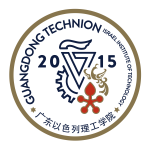
Spin and Magnetic Structure in Electrocatalysis
Title
Spin and Magnetic Structure in Electrocatalysis
Speaker
Prof. Tingbin Lim, Deputy Director of the Analysis and Characterization Center
Affiliation
National University of Singapore (NUS) and Tianjin University (TJU) Joint Institute in Fuzhou
Host
Prof. Kai Huang (GTIIT, Chemistry)
Language
English
Location
E310 (Education Building, 3rd floor)
Abstract
Oxygen electrocatalysis, especially Oxygen Evolution and Oxygen Reduction reactions (OER and ORR), is highly important in the development of the viable electrolyzers for water, as well as for the eventual development of viable metal-air batteries. Dioxygen, the main reactant/product of these reactions, has a ground triplet spin state, and therefore will impose additional conditions on the reaction process due to spin conservation. This talk will summarize the main features that the magnetic nature of the dioxygen product will impose on the catalysts due to spin conservation/evolution, and will attempt to propose criteria that will point to good potential catalysts for future development.
Bibliography
Dr. Tingbin Lim obtained a BSc (Hons) in Chemistry in the National University of Singapore, graduating in 2004. At the lab of Noble Laureate John Polanyi (University of Toronto, Canada), he obtained in 2010 his PhD in Experimental Physical Chemistry, and completed a postdoctoral term with the same group. There, he specialized in the reaction/adsorption of simple organic molecules on semiconductor and metal surfaces studied with UHV-STM. Then, he moved to the London Centre for Nanotechnology in 2013, where he worked on establishing the capability to fabricate atomically precise semiconductor devices through the combination of STM and cleanroom microfabrication techniques. He then moved to SynCat@Beijing in the Huairou district of Bejing, China in 2015, where he concentrated on bridging the gap between scanning probe methods and other analysis methods in catalysis study, like TEM and XPS, and also in developing theoretical understanding and modeling of the fundamental nature of photochemical and electrochemical catalysts, especially in strongly correlated electron systems. Since November 2019, he has been appointed as Deputy Director of the Analysis and Characterization Center for the NUS-TJU Joint Institute in Fuzhou, where he is currently based.
Over the years, Tingbin has published several scientific articles on various subjects, from single molecule reactions on surfaces to organometallic cluster synthesis. Currently his research directions focus on the chemical and physical properties of Thin layer Transition metal dichalcogenide surface defects, and their consequences on reactivity and catalytic activity with small molecules reactions, as well as the photocatalytic organic hydrogen atom transfer reactions that occur on graphitic carbon nitride materials.
Speaker
-
Prof. Tingbin Lim
Local Time
- Timezone: America/New_York
- Date: 06 Jan 2022
- Time: 10:00 pm - 11:00 pm
